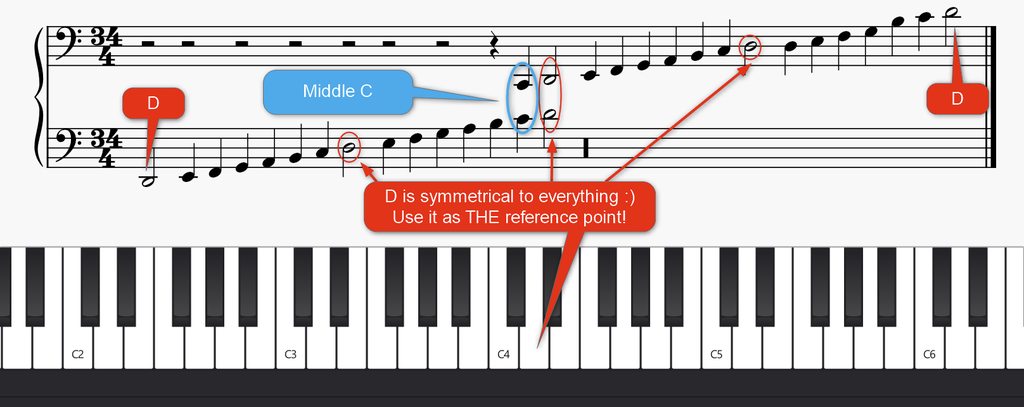PASHKULI The problem is continuity. The current G and F clefs makes for a contunuity between those both staves. There is only one (hidden) line between them – the ledger line for the so called "middle" C, which by the way is not the middle by any means· nor it is in the middle of 88 piano keys, nor geometrically if we take into account the symmetric nature of piano keyboard.
Who says, exactly one ledger line stands for continuitiy? And why is it on a ledger line? Why not the lowest line without ledgers? Or maybe handing on the lowest line could be the same as standing of the top line of the lower staff. Or you could define continuitiy to have 2 ledger lines.
Answer: It is arbitrariness. And however the decision is made, it is and always will be a compromise. For one piece this clef is more optimal, for another piece, that clef is better suited.
This brings us to question 2 - what clef if the best one?
PASHKULI Then the question will be... why G? Why not any other note, after all A is the first letter in that alphabet.
Or let's chose the C-clef or why not D – it is the symmetric centre (geometrically) of the piano keys… but so is A♭\G♯?
Symmetry is a good thing to start with, it is the least arbitrary option. On the keyboard we have D and Ab/G#. But Ab/G# is a black key, or call it a secondary key, or an unimportant key, if you want. Therefore, D is the only logical conclusion.
Use the bass-clef (= F-clef) as it is for everything, and you get D as the symmetric center of everything. We can D use as the one and most important reference point.

Okay - Using a bass-clef instead of the treble-clef makes the middle C to have two ledger lines in the upper staff. Two ledger lines is something one can still quickly recognize without counting. But on the other hand, we get rid of one ledger line at the top. And honestly, I see way more often the top-ledger lines than the bottom ledger lines. I count it as another win for the bass-clef.
btw: our current bass clef is called F-clef, because the big fat point of the symbol is located on the F-line. And the sybmol looks like a F. (If you have good fantasy or if you smoked something, you can see the "F"). I would have no problem to invent another symbol and call it D-clef. This concept needs other symbols to indicate the octave ranges, anyway.